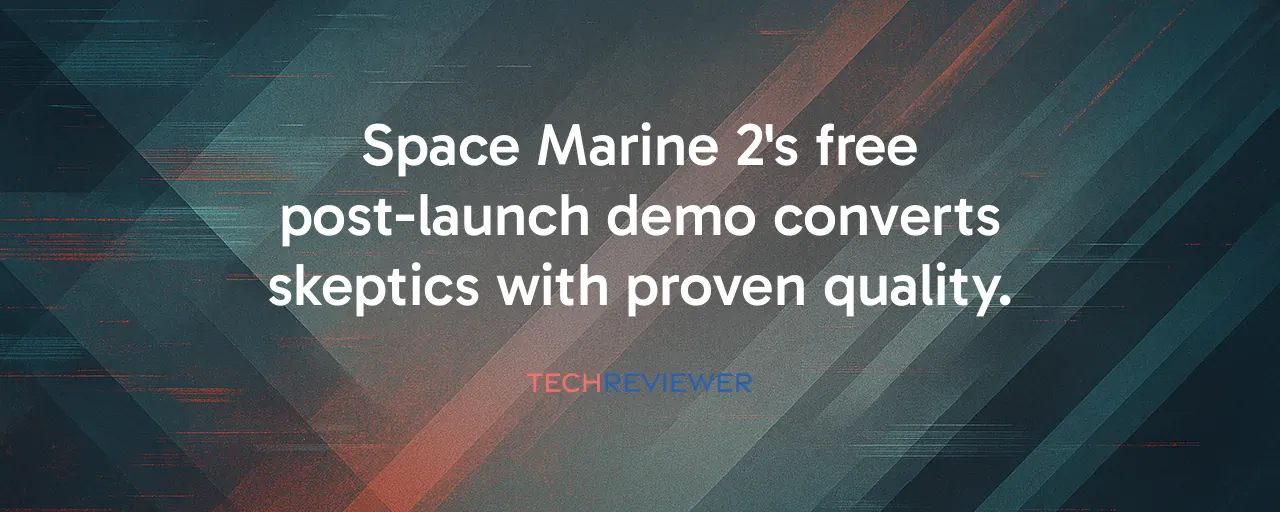A Bold Move After the Spotlight
When Warhammer 40,000: Space Marine 2 launched in September 2024, it took the gaming world by storm, selling 4.5 million copies in a month and hitting 7 million by June 2025. Most games would coast on that success, but Saber Interactive had other plans. On October 16, 2025, they released a free demo, a rare move six weeks after launch. This wasn't about pre-release hype; it was about capitalizing on the game's glowing word-of-mouth to pull in players still on the fence. The demo, packed with campaign missions, co-op Operations, and full PvP access, lets newcomers dive into the Ultramarines' brutal world without spending a dime.
This strategy feels like a masterstroke. By waiting until the community had validated the game's quality, with 83 percent positive Steam reviews and a peak of 191,785 concurrent players, Saber ensured the demo showcased a polished product. Players get to mow down Chaos hordes with chainswords or test their skills in competitive arenas, all while progress carries over to the full game if they buy it. It's a low-risk invitation that banks on the game's proven strengths, from visceral combat to Warhammer's grimdark allure, to convert skeptics into fans.
Visual Powerhouse With a Catch
The demo doesn't just offer gameplay; it's a technical showcase. NVIDIA's DLSS 4 Multi Frame Generation, exclusive to GeForce RTX 50 Series GPUs, delivers buttery-smooth visuals at 4K by generating up to three extra frames per rendered one, boosting performance by up to 8x. Ray-traced ambient occlusion adds impressive depth, with shadows that make every Space Marine battle feel cinematic. These features, paired with a 40 percent faster AI model and 30 percent less VRAM usage than prior DLSS versions, push the boundaries of what gaming visuals can achieve.
There's a trade-off, though. DLSS 4 is locked to NVIDIA's pricey RTX 50 Series, with the RTX 5090 costing $1,999 and the RTX 5080 at $999, putting it out of reach for most players in October 2025. Ray tracing's high GPU demands can also strain mid-range hardware, even with upscaling. While the demo includes broader upscaling options like AMD's FSR and Intel's XeSS, the cutting-edge features are a flex for early adopters, leaving others to admire from afar or tweak settings for playable frame rates.
Learning From the Past
Saber's approach draws a sharp contrast with other games. Take World War Z, another Saber title. Its 2019 launch leaned on post-release updates to build a loyal player base, with free content drops that kept players hooked long-term. Space Marine 2's demo takes a similar long-game view, using community trust to fuel growth. By October 2025, the game still sees 8,000 to 24,000 daily Steam players, far above most single-purchase titles a year later. The demo, running through October 20 for consoles and October 23 for PC, creates urgency to jump in before the window closes.
Compare that to Gears of War, a third-person shooter that defined the genre in 2006. Its sequels leaned on pre-launch demos to build hype, but post-launch demos were rare, as the franchise banked on established fans. Space Marine 2's strategy flips this, targeting hesitant players after the game's quality is undeniable. The lesson? Timing matters. A demo backed by 7 million players' approval carries more weight than one riding untested hype, potentially setting a new standard for how games sustain momentum.
Winning Over Skeptics
The demo's design is clever. Two campaign missions introduce the Warhammer 40,000 universe's gritty narrative, while three Operations missions highlight co-op chaos against waves of enemies. Full PvP access, with every weapon and class unlocked, lets competitive players test the waters. The demo offers a substantial slice of the game, reflecting Saber's confidence in its staying power. Focus Entertainment, the publisher, saw a 108 percent revenue jump in 2024-2025, largely thanks to Space Marine 2, proving the game's financial clout fuels bold moves like this.
Some risks linger. The demo could let players sample enough content to skip the $60 purchase, especially with its limited-time window creating a feast-or-famine vibe. Balance patches, such as those in October 2024 that reduced gear effectiveness and raised difficulty, sparked backlash and dropped recent Steam reviews to 73 percent positive. Still, the demo mitigates this by showing off the latest patches, ensuring newcomers experience a refined game. For Warhammer fans and curious newcomers alike, it's a chance to join a phenomenon that's already reshaped the franchise.
A Blueprint for the Future
Space Marine 2's demo isn't just about one game; it's a signal of where gaming might head. The third-person shooter market, valued at $7.42 billion in 2024 and projected to hit $8.08 billion in 2025, thrives on blending action with progression and multiplayer depth. Saber's post-launch demo taps into this, using social proof to cut through market noise. Games Workshop, raking in 2.5x licensing revenue from the game, sees the value in digital adaptations done right, paving the way for Space Marine 3, already announced in March 2025.
Other studios are watching. If this demo drives conversions, as studies suggest interactive experiences can boost purchase rates by up to eight times, it could spark a trend. Publishers might start saving demos for when community buzz peaks, rather than banking on pre-launch promises. For players, it's a win: a chance to try before buying, with progress that sticks. For Saber and Warhammer fans, this move cements Space Marine 2 as a juggernaut, proving that even after launch, a great game can keep finding new ways to shine.
